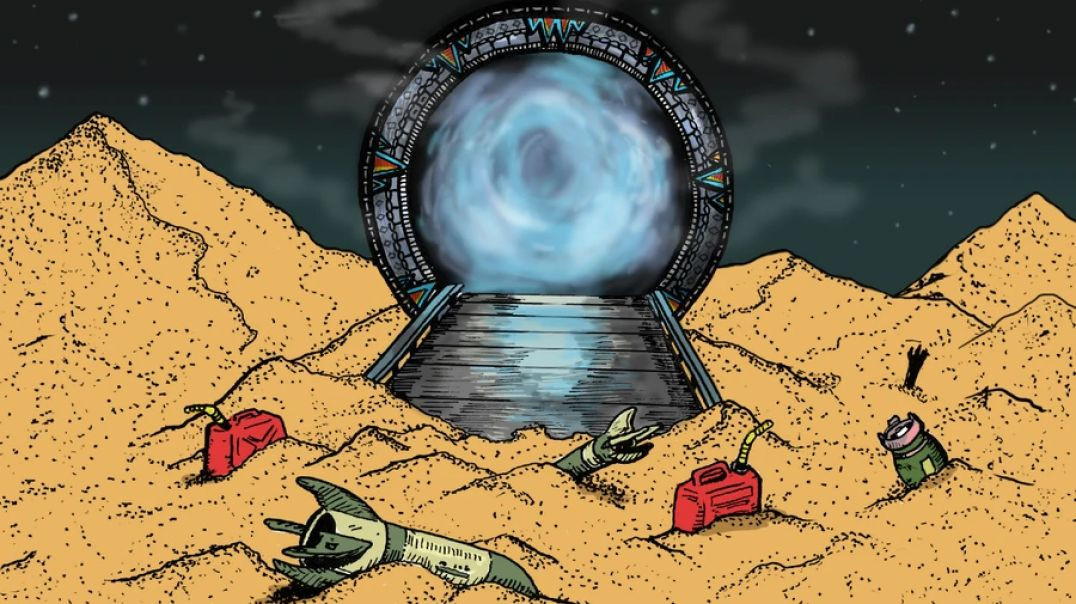Live streaming on Altcast.TV is now available!
GIANT SKULLS 💀 IN IRAQ
https://www.theguardian.com/sc....ience/2021/jun/25/ma
The discovery of a huge fossilised skull that was wrapped up and hidden in a Chinese well nearly 90 years ago has forced scientists to rewrite the story of human evolution.
Analysis of the remains has revealed a new branch of the human family tree that points to a previously unknown sister group more closely related to modern humans than the Neanderthals.
The extraordinary fossil has been named a new human species, Homo longi or “Dragon man”, by Chinese researchers, although other experts are more cautious about the designation.
“I think this is one of the most important finds of the past 50 years,” said Prof Chris Stringer, research leader at the Natural History Museum in London, who worked on the project. “It’s a wonderfully preserved fossil.”
The skull appears to have a remarkable backstory. According to the researchers, it was originally found in 1933 by Chinese labourers building a bridge over the Songhua River in Harbin, in China’s northernmost province, Heilongjiang, during the Japanese occupation. To keep the skull from falling into Japanese hands it was wrapped and hidden in an abandoned well, resurfacing only in 2018 after the man who hid it told his grandson about it shortly before he died.
Read the rest at the above URL
https://www.tiktok.com/discove....r/giant-found-in-ira
Source: https://www.facebook.com/reel/1349442935760654
Can you spot what VfB found in the following piece?
https://www.standard.co.uk/new....s/world/neanderthal-
A 70,000-year-old Neanderthal skeleton found in the foothills of Iraq has been described as “a truly spectacular find”.
The remains, consisting of a crushed but complete skull, upper thorax and both hands, were unearthed at the Shanidar Cave site 500 miles north of Baghdad.
Although its gender is yet to be determined, early analysis suggests the skeleton, named Shanidar Z, is more than 70,000 years old and has the teeth of a “middle- to older-aged adult”.
The cave has also been home to remains of 10 other Neanderthal people excavated around 60 years ago, with clumps of ancient pollen surrounding one of the skeletons.
The presence of pollen was seen by some archaeologists as evidence that these hominid species not only buried their dead but did so with flowers, challenging the widely-held belief that Neanderthals were dumb and animalistic.
Chris Hunt, a professor of cultural paleoecology at Liverpool John Moores University, described Shanidar Z as “a truly spectacular find”.
He said: “The upper remains are staggeringly complete, although the skull was flattened by compression under many tons of cave sediment.
“The body was placed in a depression on the cave floor in a semi-reclining position, with a big stone lying behind the head.”
Four of the 10 Neanderthals at the site were positioned in what the researchers described as a “unique assemblage”, raising a question as to whether they were returning to the same spot to lay their dead.
It'll be moar fun to reveal this in the comments!


![GENTLE GIANT 🎹 FREE HAND [2025 DAN BORNEMARK MIX] PLAYING THE FOOL 🎼 THE COMPLETE LIVE EXPERIENCE](https://s3.us-central-1.wasabisys.com/altcast1/upload/photos/2025/03/eYYRdruTUv4O4jx5zVeh_31_16cb04a738c6937230c104457792917a_image.jpg)

![KAMALA THE UGANDAN GIANT VERSUS GEORGE 'THE ANIMAL' STEELE ♚ [NOVEMBER 24, 1986]](https://s3.us-central-1.wasabisys.com/altcast1/upload/photos/2024/10/gC2W3tWUQ2UjRHc2YrBS_26_bdaaa7ede01b4fcb7c9238dab4173a45_image.jpg)





